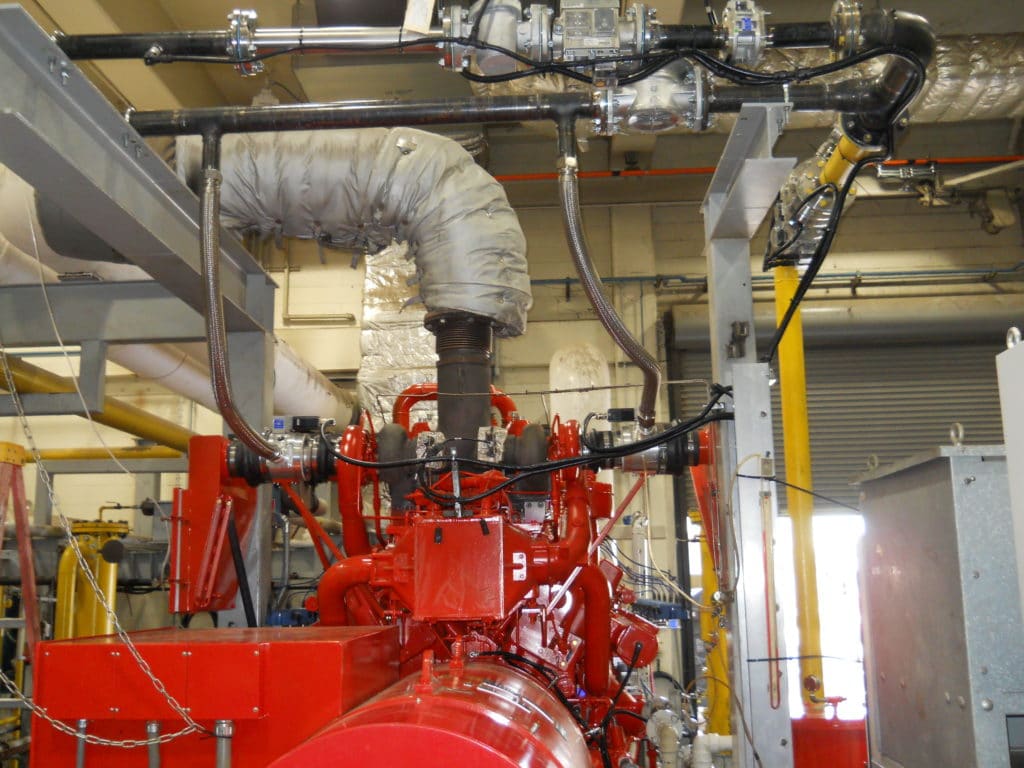In the ever-evolving landscape of power generation, California’s stringent air quality regulations have presented new challenges for businesses relying on emergency diesel power generators. Collicutt has risen to meet those challenges head-on with their innovative approach to meeting Tier 4 Final (T4F) requirements.
Before we dive into the customer case study, we need to provide some definitions with respect to the different Tier 4 Final requirements.
DEFINITIONS
T4F Certified – US EPA testing and certification process has been completed by the engine manufacturer to meet strict limits on exhaust particulates and NOx. Engine and exhaust system components are serialized and mated to ensure installation compliance. The engine data tag is labeled as Tier 4 Final certified. Exhaust system operating parameters are determined by the certification. Any deviation or component failure will result in an engine shutdown.
T4F Compliant – US EPA Tier 4 Final certification has not been completed. Engine data tag will show an EPA Tier 2 or Tier 3 certification based on engine HP size. A Tier 4 Final exhaust system is retrofitted to these engines designed to meet Tier 4 Final emission levels. Exhaust system operation is determined by the engine manufacturer, deviations or component failures in the exhaust system will result in an alarm and notification, not an engine shutdown.
THE CHALLENGE: Navigating New Air District Regulations
Recently, one of our customers approached us with a requirement for two backup generators in a critical application, both needing to meet Tier 4 Final emissions standards but also requiring high uptime availability.
THE SOLUTION
Recognizing the unique needs for our customer, Collicutt developed a tailored approach to address these regulatory challenges. We combined cutting-edge technology with customization to deliver a power generation package that not only meets Tier 4 Final standards and high operational reliability but also exceeds customer expectations.
Collicutt provided a custom Tier 4 Final Compliant package with two mtu generators at 1500kW and 1000KW, a third party T4F after treatment system, an oversized fuel tank and a custom enclosure, complete with two sets of stairs, to meet site-specific space requirements. The supplied systems drastically reduced particulate matter (PM), and nitrogen oxides (NOx) emitted from diesel engines and also comply with UL2200 standards for stationary generators in Canada and the US.

THE ADVANTAGE: Compliant vs Certified Packages
While both T4F Compliant and Certified systems meet the same emissions limits set by EPA Tier 4 Final standards, a compliant package has multiple advantages.
- Uninterrupted Power Supply: Unlike certified systems that may shut down the engine compliant systems maintain power to critical loads while providing alarms for potential issues
- No Power Derating: Compliant systems do not induce engine power derates when exhaust system problems are detected.
- Flexible DEF Management: Engines continue to operate even with low or poor-quality Diesel Exhaust Fluid (DEF), ensuring power availability in critical situations.
- Resilience to Exhaust System Issues: High backpressure or temperatures in the exhaust system do not trigger shutdowns.
- Continuous Operation: The engine keeps running even if emissions temporarily fall out of the normal range or if exhaust emission sensors malfunction.
- Alarm: Tier 4 Final compliant exhaust system does provide an alarm to the operator notifying them of any critical event, however, it keeps powering the critical loads.
If the exhaust system does go into an alarm condition and the unit runs out of emissions compliance the operator must report the incident along with a repair plan to the local authorities that issued the permit to operate.
Collicutt is available to support our customers with long-term maintenance designed to avoid these alarm conditions. In the unlikely event an alarm is detected we are available 24/7 to assist in troubleshooting and repair to keep your critical systems in operation.
THE RESULT
Overall, the project successfully provided our customer with engines that significantly reduce harmful emissions, offering both environmental and potential business benefits. 
The final emission performance of the supplied engines are as follows:
NOx is reduced to 0.5 g/HP-h (a 90.6% reduction), particulate matter (PM) is reduced to 0.02 g/HP-h (a 60% reduction), and non-methane hydrocarbons (NMHC) are reduced to 0.14 g/HP-h (a 76.6% reduction).
These emission reductions meet current emissions regulations while providing a highly reliable system not prone to emissions related equipment shutdowns as commonly seen in some T4 Certified systems.
TAKE ACTION
By choosing Collicutt’s compliant Tier 4 Final solutions, businesses can ensure they meet regulatory requirements without compromising on reliability or performance.
Call or email us at 888.682.6888 or info@collicutt.com for more information.
Check out more blog posts here.


